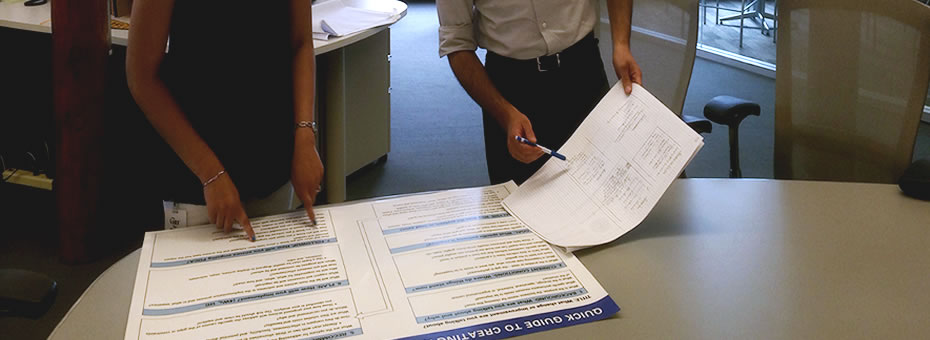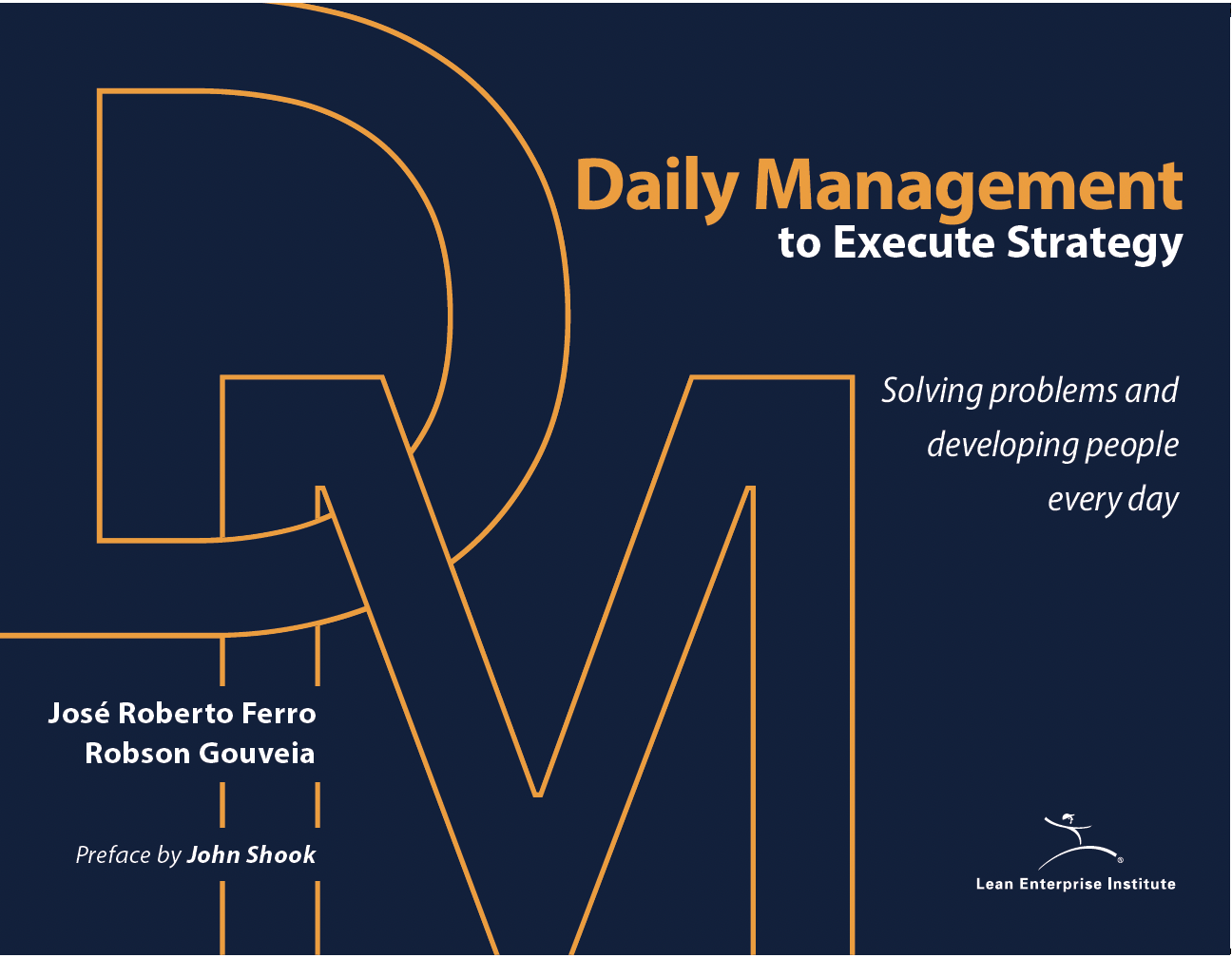Have you ever been told, “You need to do an A3 on that?” Or worse, “You should fill out an A3?” Me too. So, it’s worth repeating that though the A3 report appears merely to be an 11-by-17-inch document to fill out, it’s much more than that. Instead, the A3 serves as your guide through several plan-do-check-act (PDCA) improvement or problem-solving cycles. And as you proceed through and record the A3 thinking process, it becomes a report that helps you communicate and collaborate with others. For leaders and managers, the A3 process is a way to engage people in dialogue at the gemba. [NOTE: There are different ways of practicing PDCA, but I use the PDCA process specific to Toyota’s 8-step methodology.]
… we want to focus on the A3 thinking process, not just the A3 as a report. So, here’s a way to ensure your A3 thinking is sound.
As I’ve said before, we need to be careful how we talk about A3s; we want to focus on the A3 thinking process, not just the A3 as a report. So, here’s a way to ensure your A3 thinking is sound. And since a primary purpose of using A3 thinking is to prevent problem solvers from jumping to solutions, testing your A3 thinking process means closely examining whether you’ve truly engaged in every part of the process.
Try ‘Reading in Reverse’
I experienced this valuable lesson/process, called “reading in reverse,” firsthand from my trainers during my tenure at Toyota. So, to test that your A3 thinking is sound, read your A3 backward, from bottom-right to top-left. You can also use this approach as an A3 self-training practice. Managers can use it to help A3 owners strengthen their problem-solving capabilities.
When I see someone speeding through the problem-solving process, I encourage them to read their A3 report in reverse, knowing there are checkpoints within the A3 that would call them (or rather, their thinking) out. The PDCA process within the A3 “knows” when the logic is broken between steps. You just need to be willing to be aware and tune in to the right frequency to hear it.
Traditionally, we read the “PDCA story” from left to right. For the A3 creator/owner, the left side consists of:
- Defining your purpose
- Clarifying the problem and framing it as a measurable gap
- Breaking down the problem and selecting a prioritized problem
- Finding the point of the problem’s occurrence and identifying its root cause
The right side of an A3 consists of:
- Developing countermeasures
- Identifying countermeasures and seeing them through
- Monitoring/checking process and results
- Standardizing and sharing best practices, sometimes new best practices (yokoten)
It’s natural for most people (especially Westerners) to read from left to right; that’s how we write and read. The writer reveals essential elements of the story in an order that best communicates the information. Similarly, writing and reading an A3 report from left to right tells a logical story. I was always encouraged — and encourage those I coach — to make the A3 report “street-friendly.” You want to create an A3 that everyone understands, even if they don’t know anything about the process.
Reading an A3 in reverse helps A3 owners and their leaders confirm the use of a logical, fact-based thinking process.
Reading an A3 in reverse helps A3 owners and their leaders confirm the use of a logical, fact-based thinking process. For example, they can assure that the A3 owner didn’t merely get lucky in choosing the right countermeasure (aka the throwing a dart method). Also, they can better distinguish that the problem solvers used facts, not opinions, to guide their thinking.
While this reading-in-reverse check mechanism isn’t 100% full-proof (poke-yoke), it requires the A3 owner to deeply consider and answer questions about the logic of their thinking.
Reading in Reverse, Step-by-Step
To read an A3 in reverse, start at the bottom, right of the A3, and read each section in reverse order. As you read, ask the following questions, checking to see whether each answer links to the A3’s purpose and the gap the A3 owner is trying to close:
- Is the newly written standard or procedure meeting customer expectations (internal/external)?
- Was the new process standardized based on monitoring the process after countermeasure implementation?
- Did the countermeasure(s) prove (through follow-up) to address the root cause(s) of the problem?
- Did the root cause(s) being addressed take care of the point of occurrence in the process?
- Did addressing the root cause(s) achieve the target? (By how much and by when?)
- By meeting the target, was the prioritized problem (smaller piece of gap) addressed?
- Did addressing the prioritized problem reduce some percentage of the gap?
- Did reducing the gap by some percentage help you improve a key performance indicator?
- Did improving a key performance indicator help you meet your ultimate goal (purpose for problem-solving)?
If you can read the A3 report from left to right and then from right to left and answer all the questions above, you passed the cause-and-effect logic test between the PDCA steps in both directions, back and forth.
If you can’t maintain the logic, it could mean a few things:
- You jumped to a solution too quickly, only solving a symptom
- You based your A3 mostly on assumptions and opinions
- You didn’t “go and see” the process in person, at the gemba
- You didn’t engage in genuine dialogue with the people who do the work
These are just a few factors that play into ineffective problem-solving. If you’re “doing” or “filling out” an A3 behind your desk, I can say that most of the time, you will not be able to answer the questions above.
I remember my Japanese trainers sometimes saying to me, “You got lucky. Lucky is not sustainable!” This retort is representative of the thinking behind the infamous “red pen” markups many have gotten on their A3s from sensei.
So, now that you know the secret, it’s up to you to understand, practice, and develop others in this A3 thinking process. If you’re willing to invest the time, you’ll get a proven methodology with repeatable, sustainable results.
Using A3 thinking with your team members is a way of leading and learning simultaneously. It’s OK not to have all the answers and, instead, learn together, building mutual trust and respect. So, give it a try, and put your team members through the test. I promise it will make you think differently about PDCA and the A3.
Editor’s Note: This Lean Post is an updated version of an article published on July 11, 2014, one of the most popular posts about this vital lean practice.
Managing to Learn with the A3 Process
Learn how to solve problems and develop problem solvers.








Excellent! I do Appreciate the way you borrow to us your curve learning! it’s incredible how we can be assured if we are working on the right direction to solve any problem!